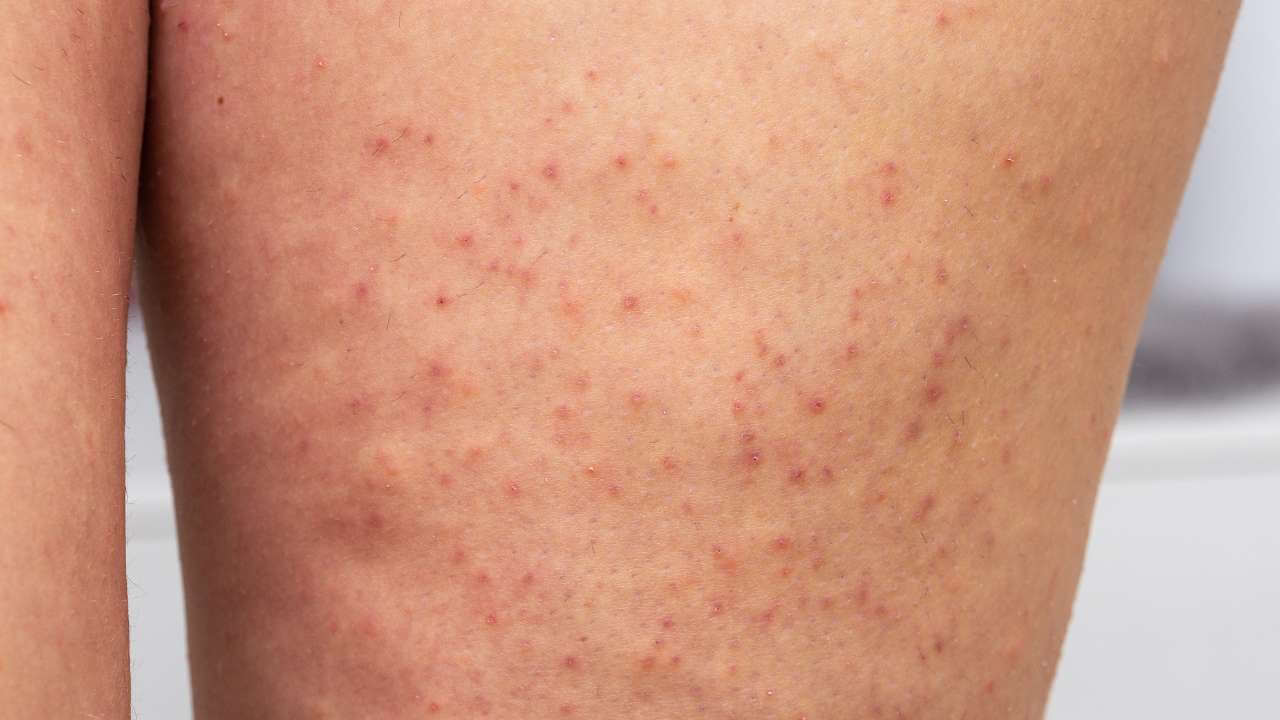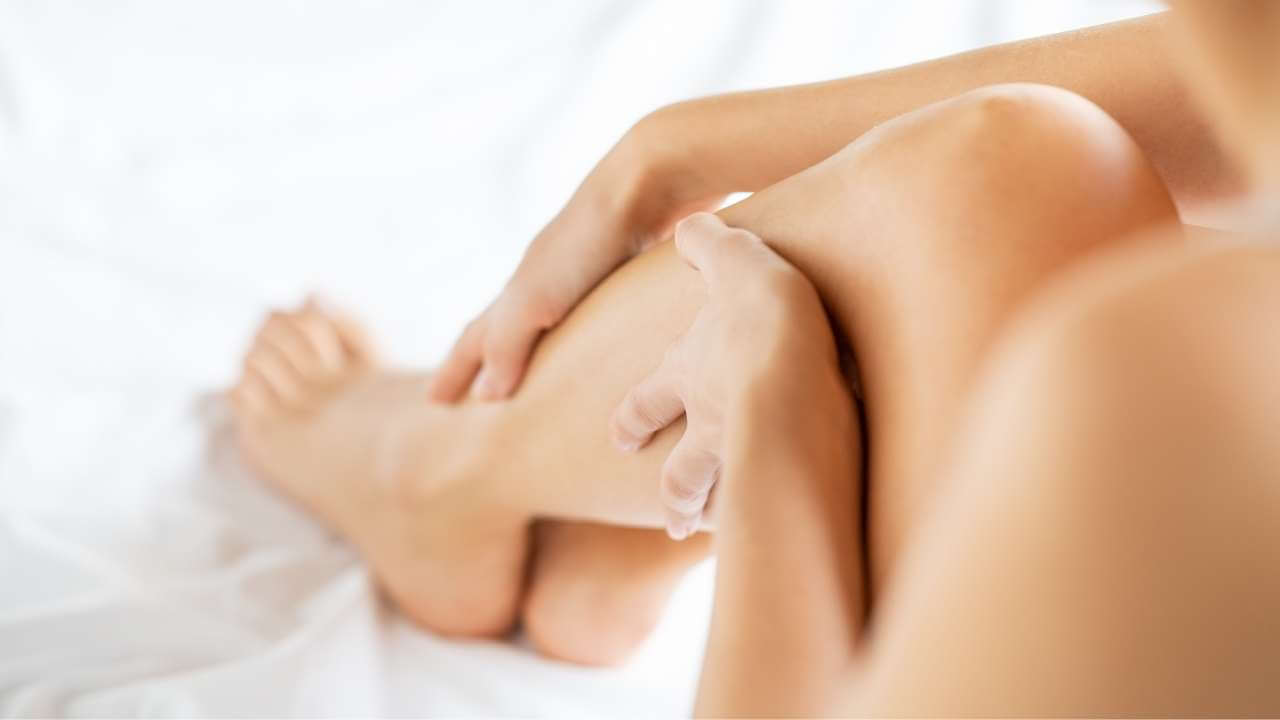Are you tired of staying home and hiding your legs due to those pesky, dark spots and pores known as strawberry legs?
You're not alone! Countless people feel self-conscious and struggle with this common skin issue that leaves them feeling less than confident in their own skin. But don't worry, we've got your back!
We've scoured the internet, performed in-depth research, and compiled the best-kept secrets to help you achieve the smooth, sensational legs you've always dreamed of.
Imagine slipping into your favorite shorts or dress without worrying about the appearance of your legs. Envision stepping out with confidence, knowing that your skin is flawless and radiant. The good news is that it's entirely possible with the right tips and tricks.
So let's dive in! Keep reading to uncover the secrets on how to put an end to the appearance of strawberry legs and finally achieve that silky smooth skin you've always desired. Don't let skin irritation hold you back any longer - your journey to beautiful, blemish-free legs starts now!

What are Strawberry Legs?
Strawberry skin develops when inflamed hair follicles or skin pores have become obstructed with debris, such as dead skin cells, dirt, bacteria, or excess oil.
The term strawberry legs refers to the appearance of tiny red bumps and skin texture of dark spots and open pores that resemble the seeds of a strawberry. The presence of dirt, bacteria, and excess oil in the obstructed hair follicles or clogged pores further resembles the strawberry seed.
Symptoms of Strawberry Legs
The visibility of dark spots, dead skin cells, and ingrown hairs is more pronounced on lighter skin tones. Common symptoms include:
- Darker skin pigmentation such as dark brown or black spots that appear after shaving.
- Enlarged pores that seem darker than usual, resembling blackheads.
- Small bumps with a dotted or pitted appearance on the skin's surface of your legs.

What Causes Strawberry Legs?
By shaving or waxing, we often reveal clogged pores and dark spots which resemble strawberry legs. However, this occurrence can also be due to an internal skin condition or fungal infection and therefore should not be ignored.
If you're feeling any sort of pain, inflammation, or itchy skin, these are all signs of damage to the skin's protective barrier. You should seek medical assistance right away so that any other underlying conditions can be ruled out.
Here are 5 possible causes of this condition to be aware of:
1․ Clogged Pores
The primary culprit behind strawberry legs is the blockage of pores or hair follicles. Bacteria and dead skin can accumulate, leading to trapped oil within the pores or irritated hair follicles.
When this oil comes into contact with air, it oxidizes and turns black, forming a blackhead or open comedones on the skin's surface. These minuscule black dots give rise to the characteristic appearance of strawberry like patches on the legs.
Individuals with coarser dark hair or more prominent pores are at a higher risk of developing this condition due to clogged pores. Additionally, a lighter skin tone makes the presence of blocked or clog pores even more noticeable.
2․ Using an Old Razor
Using an old or dull razor while shaving, especially without shaving cream, can often result in skin injury or razor bumps, which can cause the appearance of strawberry patches on the skin and lead to post-inflammatory hyperpigmentation.[1] Additionally, shaving can cut off the upper part of a closed comedone, commonly known as a whitehead, leading to exposure of its contents to air and transforming it into a blackhead.
3․ Folliculitis
Exercise or a relaxing dip in the hot tub may seem like harmless activities, but they can inadvertently lead to folliculitis.
When our skin is wet and sweaty, it's more prone to damage from rubbing while wearing tight clothing that allows bacteria and dirt into the hair follicle. Folliculitis typically manifests as tiny red bumps on your skin which can darken over time causing a condition known as 'strawberry legs'.[2]
It's important to be aware of what causes this condition so you don't have any unpleasant surprises after your next workout session!
4․ Keratosis Pilaris
Although keratosis pilaris and strawberry legs are technically different conditions, they can cause a similar appearance of red dots on your upper arms and legs.
Keratosis pilaris typically manifests as a group of small, rough bumps on the skin resembling goosebumps, caused by a buildup of dead skin cells and keratin protein in hair follicles.
Often described as similar to tiny pimples or chicken skin, bumps from keratosis pilaris have a rough texture and can come in a range of colors from skin-colored to more vivid hues like purple and red.
5․ Dryness
Excessively dry skin can contribute to the development or aggravation of strawberry legs and other similar skin conditions. It's important to note that dryness alone is not responsible for the darkening of pores.
When your skin is excessively dry, it becomes more susceptible to irritation during shaving and waxing which can lead to the development of razor burn, folliculitis, and the characteristic strawberry like appearance of the legs.[3]
Moreover, dryness tends to highlight the visibility of skin conditions such as keratosis pilaris, folliculitis, open comedones, and razor burn.

How to Get Rid of Strawberry Legs?
Want to get rid of those unsightly strawberry looking patches on your legs? Here are the steps you need to take for smoother, clearer skin!
1․ Tips for Shaving to Prevent Strawberry Legs
To prevent ingrown hairs that contribute to this skin problem, it is recommended to use a sharp and hygienic razor while shaving, along with a moisturizing shaving cream that can keep your skin warm and moist.
- Shave gently in the direction of hair growth, using short and light strokes. Ingrown hairs happen when the hair follicle grows in a curved or opposite direction and penetrates the skin.
- It is advisable to shave during or after a shower when your skin is free from dead skin cells and excess oil that can clog your razor.[4]
- Rinse the blade frequently while shaving, and replace the blade or dispose of disposable razors after about six uses to prevent irritation.
- Never shave without moisturizing shaving cream.
- Ensure to store the razor in a cool and dry place to prevent bacterial growth and avoid leaving it in the shower.
2․ Regular Exfoliation and Moisturization
To help prevent strawberry legs, it is crucial to maintain smooth and soft skin. Regularly exfoliating can help to dissolve dead skin cells, making it easier for new hairs to grow and reducing the likelihood of clogged pores or hair follicles.
A clean washcloth can be used for exfoliating, followed by moisturizing to keep the skin hydrated. Moisturizing with a lotion or cream containing coconut oil to combat dry skin can also improve the appearance of this unsightly condition and reduce the risk of recurrence.
However, it is essential to avoid using products that contain fragrances or dyes, as they can irritate the skin. Consider using mild products to gently exfoliate your legs regularly, such as a dry brush, body scrub, or glove, that can loosen oil, dirt, and dead skin from the pores and soften the skin during exfoliation.
3․ Salicylic Acid or Glycolic Acid
Using skincare products that contain salicylic acid or glycolic acid can be effective in removing dead skin, reducing the symptoms of strawberry legs, as well as addressing any underlying acne conditions that may be contributing to the problem.
Products with salicylic acid and lactic acid are also useful in eliminating dry skin and dark patches, as they can help exfoliate dead cells and moisturize the skin.
4․ Using an Epilator as an Alternative to Shaving
Unlike shaving, an epilator doesn't leave behind a sharp edge that can cause irritation and inflammation.
However, it's important to note that using an epilator can be uncomfortable or slightly painful, as it works like a set of powerful tweezers to pull the hair from the hair follicle
Despite this, it can be a viable alternative to shaving, especially since it only needs to be used every two to three weeks, making it a more bearable option for managing hair growth and preventing ingrown hairs.
5․ Permanent Hair Removal Options
Consider the following options for permanent hair removal to help manage strawberry legs:
- Electrolysis: This technique uses a low electrical current to remove hair from the hair follicle, but it may require several sessions before you see a difference. Though it typically doesn't have side effects, you may experience slight discomfort during the process.
- Laser Hair Removal: Laser therapy uses a laser to precisely remove hair and typically requires two to six sessions. However, laser hair removal may result in side effects such as burns, scars, or changes in skin color where the hair was removed.

Did We Mention...
How To Get Rid Of Strawberry Legs FAQs?
People often want to know the best ways to prevent and treat strawberry legs to achieve smooth and radiant skin.
In this section, we answer some of the most common questions related to strawberry legs, and the best way to eliminate unwanted body hair to avoid skin irritation.
Q. What's The Best Option for Hair Removal to Avoid the Strawberry Leg Effect?
While waxing removes hair from the root and provides a longer-lasting solution compared to shaving, it can also cause skin irritation and folliculitis, which may contribute to the development of strawberry legs.
On the other hand, shaving only cuts the hair at the surface of the skin, making it a temporary solution. Therefore, using an epilator is often considered the best option for preventing strawberry legs, as it removes hair from the root similar to waxing, but with less risk of skin injury and folliculitis.
However, the optimal hair elimination method may vary based on individual preferences and skin type.
Q. Can You Treat Strawberry Legs After Developing Them?
While prevention is the best approach to managing strawberry legs, using a non-comedogenic moisturizing product like a lotion or coconut oil can help prevent the problem from worsening.
However, it's important to note that once this condition develops, it may be more challenging to treat it effectively. Therefore, it's advisable to take preventive measures and maintain healthy skincare habits to minimize the risk of developing strawberry legs in the first place.
Q. Is It Ok to Have Strawberry Legs?
Strawberry legs is a common and harmless condition that typically does not pose any significant health risks. However, they can be a cosmetic concern for some individuals, especially during the summer months when they may prefer to wear shorts, skirts, or tight clothing.
If you're bothered by the appearance of strawberry legs, there are several preventive measures and treatment options available to help manage the condition.

The Final Mention
Strawberry legs can be a frustrating and bothersome skin condition, but with the right preventive measures and treatment options, you can achieve the smooth, sensational legs you've always wanted.
From regular exfoliation and moisturization to using an epilator or considering permanent hair removal options, there are many ways to manage and prevent strawberry legs. Don't let this condition hold you back from enjoying your favorite summer outfits.
Take charge of your skincare routine and say goodbye to strawberry legs for good!
If you want to stay up to date on the latest skincare tips and tricks, be sure to sign up for our free newsletter. We'll keep you informed and help you achieve the healthy, radiant skin you deserve.
✅ 4 Sources
HealthMention only uses sources from authoritative and reliable resources, such as peer-reviewed studies, to strengthen the accuracy of our content.
- Crutchfield CE. The causes and treatment of pseudofolliculitis barbae. Cutis. 1998;61(6):351-356. Accessed April 3, 2023. https://pubmed.ncbi.nlm.nih.gov/9640558
- Winters RD, Mitchell M. Folliculitis. PubMed. Published 2020. https://www.ncbi.nlm.nih.gov/books/NBK547754/
- Dry skin: Overview. www.aad.org. https://www.aad.org/public/diseases/a-z/dry-skin-overview
- Hair removal: How to shave. www.aad.org. https://www.aad.org/public/everyday-care/skin-care-basics/hair/how-to-shave









